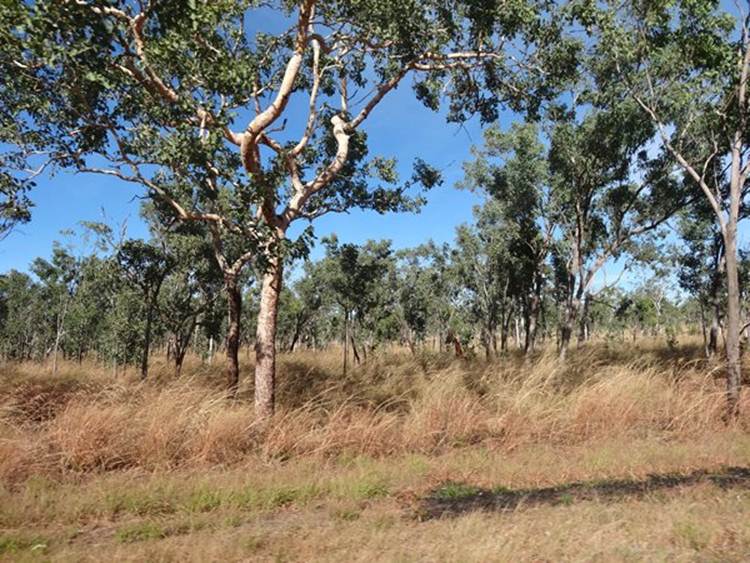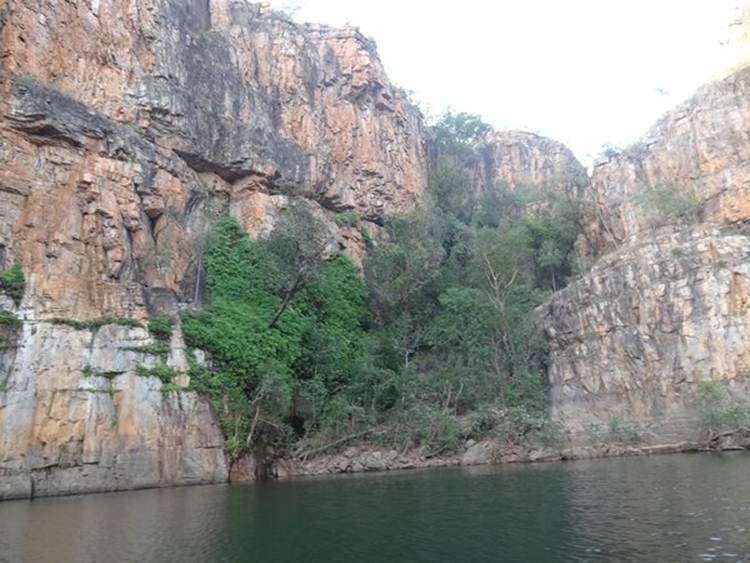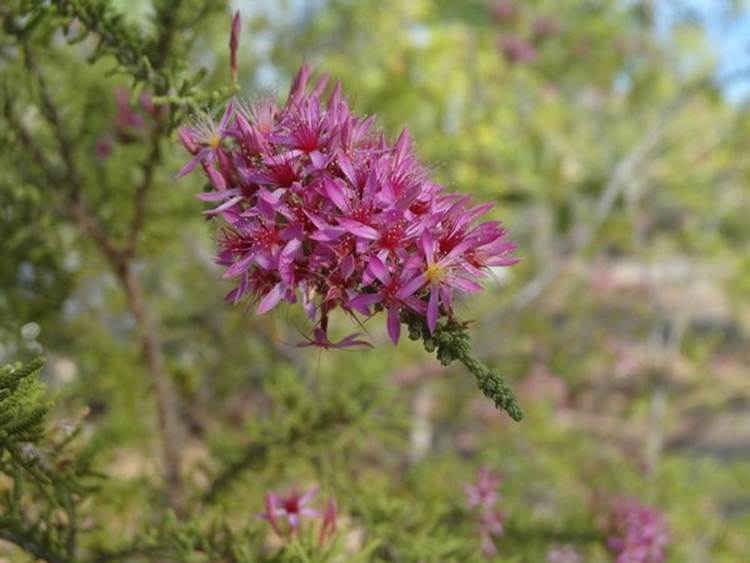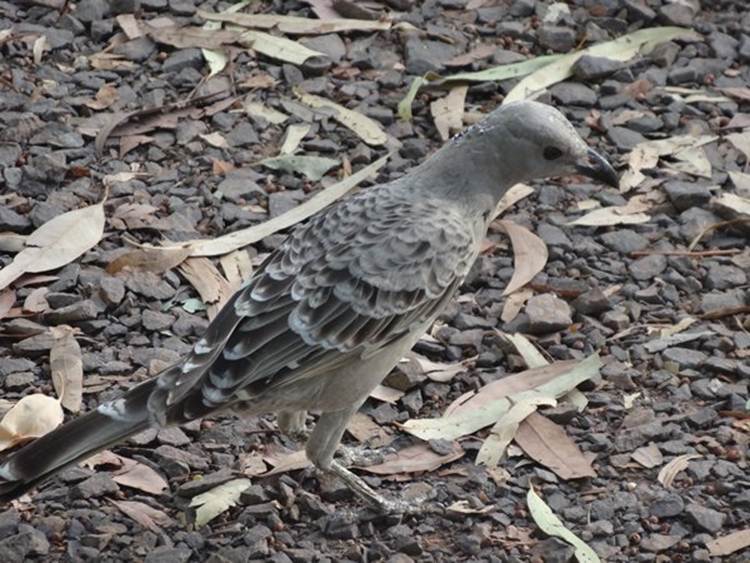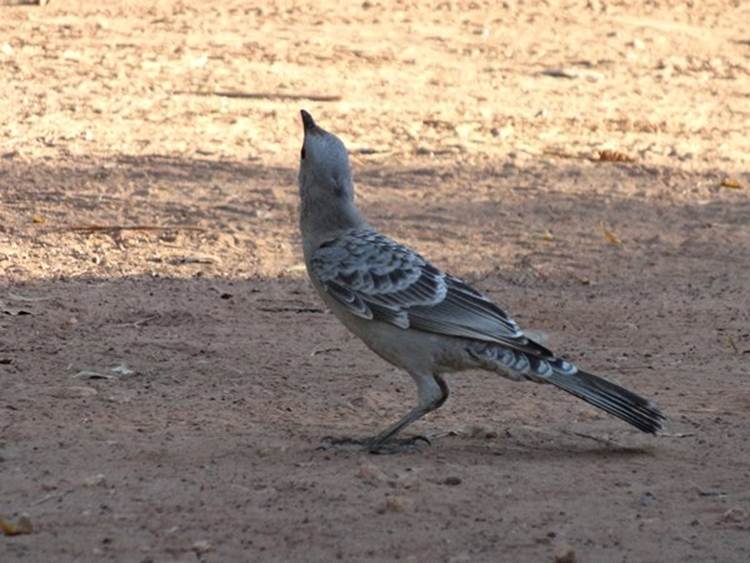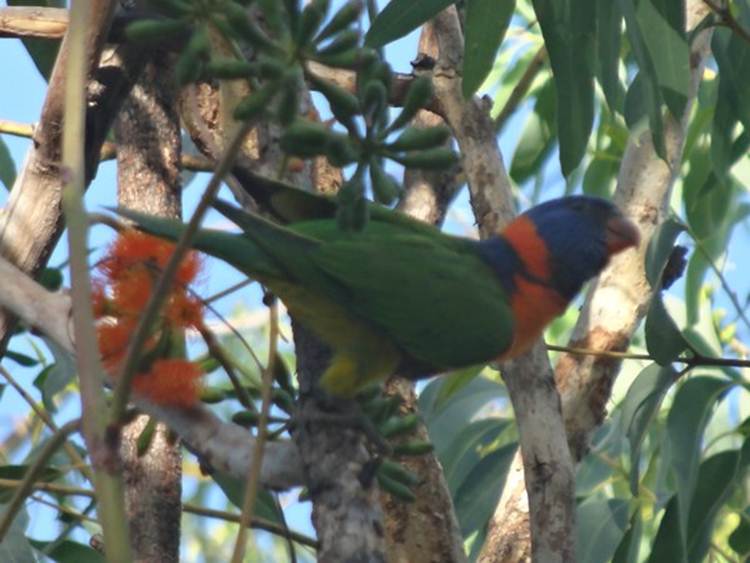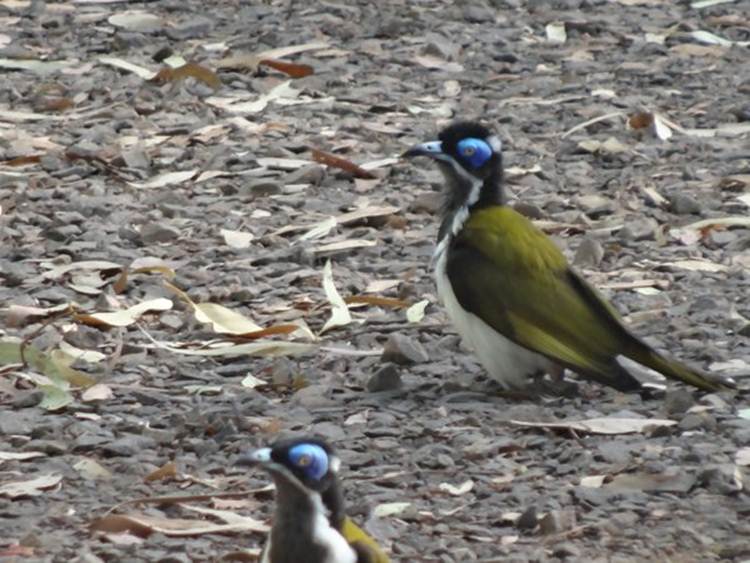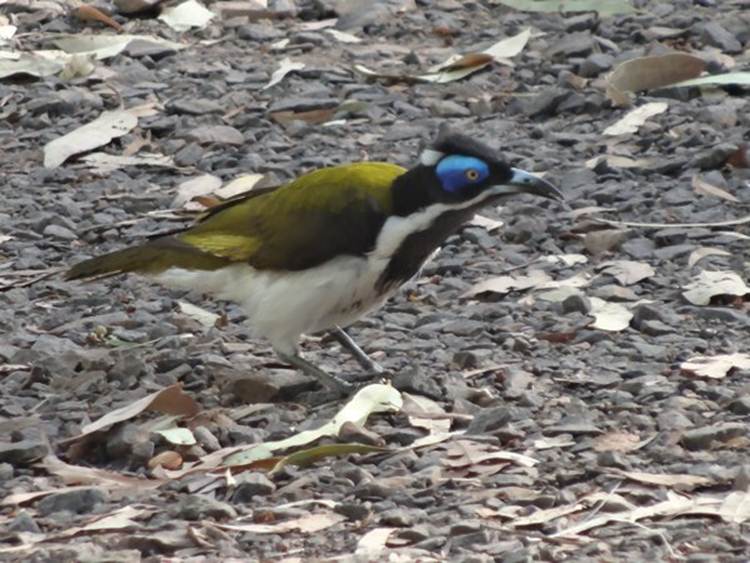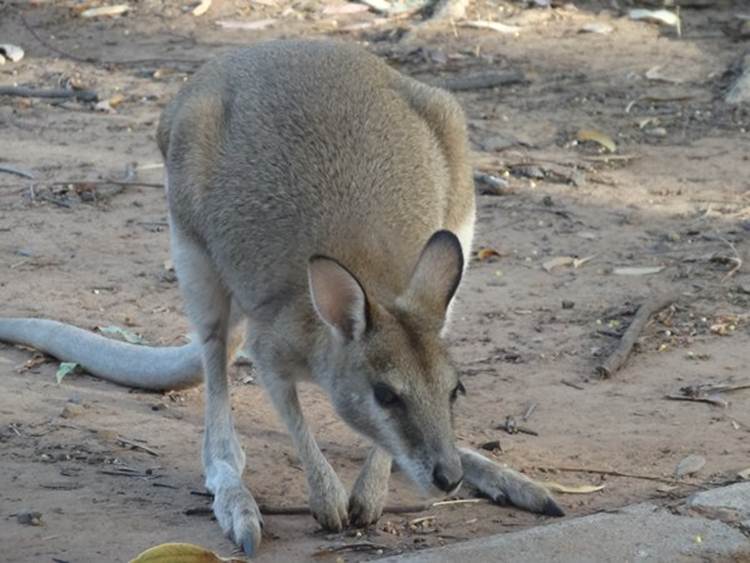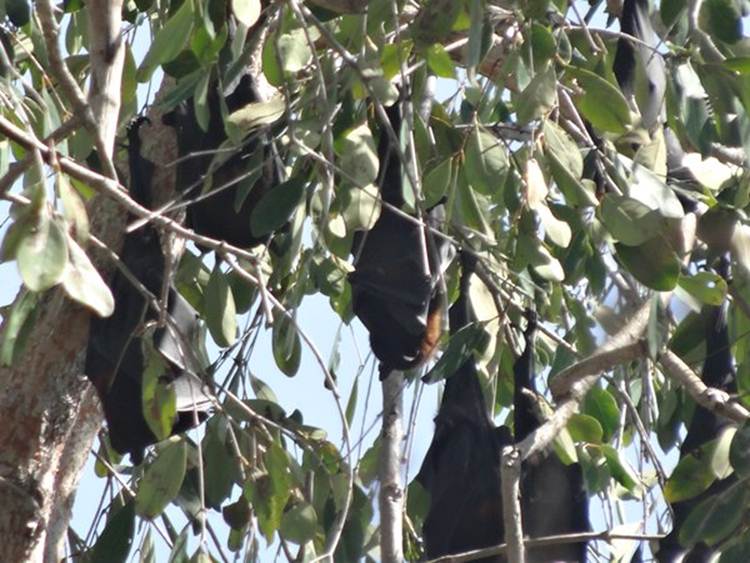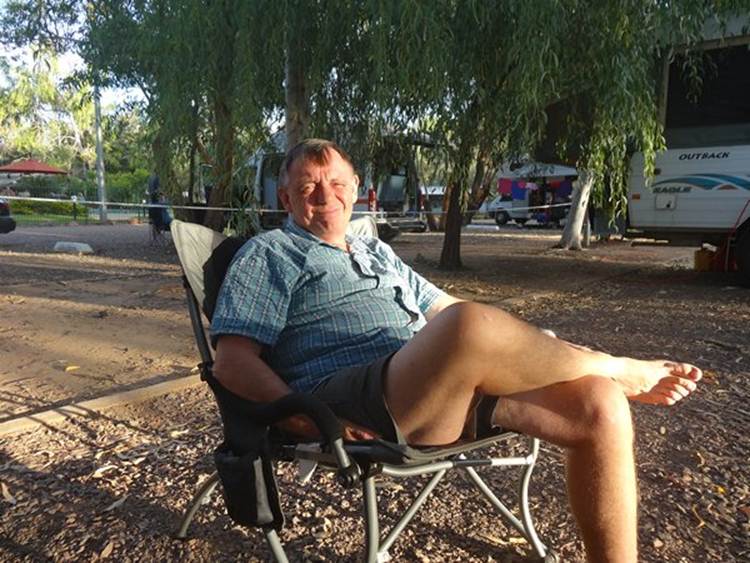Nitmiluk (Katherine Gorge)

Position 14 19.18S 132 25.35E Getting lots more trees and longer grass now.
Booked campsite within the Nitmiluk National Park – another area handed back to the aborigines and then leased back to the government for 99 years. We want to know what happens at the end of the lease? And does the money made by the campsite and tours they do here go back to the aborigines? Anyway, lovely pool here and the washing machines are free but the camp prices have gone up by about 20%. The National Parks visitor centre was a short 50m walk away. It had a nice little geology section so here goes: ‘About 1860 million years ago this area had a lot of volcanic eruptions that vented clouds of hot ash and blocks of hot volcanic rocks though the air. Occasionally, lava erupted and flowed over the landscape. A 400m to 1km thick pile of volcanic rocks plus some minor sediment layers is still preserved. Given the name Pilum Tree Creek Volcanoes and the rocks are generally a dark colour (mainly basalt and andesite). The volcanic rocks covered slightly folded sediments (the Tollis Formation), which in turn overlay the older, folded and contorted the sedimentary rocks (the Burell Creek Formation). Crystallised and solid granite magmas intruded into the older rocks. No fossilised evidence has been found for any land based animals or plants having existed at this time. 1650 million years ago, a slowly subsiding broad river plain gradually built up thick deposits of sand and gravel. This sediment were washed down from high and deposited by a network of braided streams. Occasional pulses of volcanism poured lava flows over the landscape that were eventually covered by more sand. The surface was still free of any land plants or animals. Called the Kombolgie Formation, it forms an escarpment that covers hundreds of kilometres of Arnhem Land. It is a thick pile, up to 1km thick in places, of compact sandstone, conglomerate (river gravels) and occasional mudstone and volcanic rock. It is very tough and not easily weathered or eroded by streams, except along fractures and dykes (as in Katherine Gorge formation). In contrast the volcanic rocks laid down 1860 million years ago are more easily eroded (they form the low hills in an area known as 17 Mile Creek Valley). No fossils are recognised, and it is thought that no hard bodied or shelled creatures had yet evolved. Only imprints of simple, soft bodied creatures have been found in rocks of this age. 120 million years ago that shallow sea covered much of the region, with thin layers of mud and sand washed into it by rivers. These sediments covered the earlier rock layers, which by now had been folded again. Up to 40m thick mesas of white sandstone and siltstone are preserved as capping’s in 17 Mile Creek Valley and on the escarpment. Animal and plant species had now colonised the land surface. Dinosaurs and some early ancestors of mammals, ferns, trees, insects and lizards were widespread. Some plant fossils and ammonite shells have been found locally in these rocks, but throughout Australia similar Cretaceous rock layers have yielded dinosaur, fish and other fossil discoveries. For example, ichthyosaurs and plesiosaurs have been found in the N.T.; footprints and some bone evidence for large seropod dinosaurs have been found at Broome and in Queensland; and an enormous variety of dinosaurs have been found in the Otway Basin of Victoria. After the shallow cretaceous seas receded from northern Australia weathering and erosion began to attack the Kombolgie Formation. The rocks are mainly sandstone and were fractured as a result of earlier folding. Some fractures developed into fault zones along which occasional earthquakes released built-up stresses. Also some fractures were filled with dykes of dark rock called dolerite. The dolerite dykes were up to ten metres wide and a few kilometres long and had crystallised from injected hot magma. Streams flowing over the landscape preferentially followed the zones of fractured rock. The sandstone was very hard and resistant to erosion, but the dolerite dykes and the zones of broken rocks in the fractures were more easily weathered and eroded. Dolerite is especially susceptible to chemical weathering in the tropics. The early Katherine river began a zig zag pattern following the zones of weakness. Erosion continued, with the river and streams cutting deeper into zones of weakness in the rocks. Eventually the gorge as seen today was formed by the Katherine river. Away from the river, long narrow valleys developed where the dolerite dykes were weathered out. The steep valley walls and the rich dark soil formed from weathered dolerite favoured the preservation of remnant rainforest habitats.’
So there you go. Lots of wattles and some of the eucalypts and small bushes are in flower at the moment. Just as well as lots of honeyeaters are around. Given up trying to identify flowers as none look like my guide book. This very pretty bush had gorgeous pink flowers:
We think this might be the great bowerbird. There were loads of them at the campsite. However, the males have a pink crest but we never saw any which makes us think maybe these were not bower birds.
The red collared lorikeet (Trichoglossus haematodus ssp rubritorquis).
Seen these beautiful birds before but they are less shy here. This is the blue-faced honeyeater (Entomyzon cyanotis), really large and gregarious., with a beautiful golden olive features and brilliant blue/turquoise face.
More pretty faced wallabies.
There are also some red flying foxes camped out in a tree close by. Boy do they stink – it’s their pee apparently.
Paul chilling out.
|
